Python | Implementation of Movie Recommender System
Last Updated :
11 Jan, 2023
Recommender System is a system that seeks to predict or filter preferences according to the user’s choices. Recommender systems are utilized in a variety of areas including movies, music, news, books, research articles, search queries, social tags, and products in general.
Recommender systems produce a list of recommendations in any of the two ways –
- Collaborative filtering: Collaborative filtering approaches build a model from the user’s past behavior (i.e. items purchased or searched by the user) as well as similar decisions made by other users. This model is then used to predict items (or ratings for items) that users may have an interest in.
- Content-based filtering: Content-based filtering approaches uses a series of discrete characteristics of an item in order to recommend additional items with similar properties. Content-based filtering methods are totally based on a description of the item and a profile of the user’s preferences. It recommends items based on the user’s past preferences.
Let’s develop a basic recommendation system using Python and Pandas.
Let’s focus on providing a basic recommendation system by suggesting items that are most similar to a particular item, in this case, movies. It just tells what movies/items are most similar to the user’s movie choice.
To download the files, click on the links – .tsv file, Movie_Id_Titles.csv.
Import dataset with delimiter “\t” as the file is a tsv file (tab-separated file).
Python3
import pandas as pd
column_names = ['user_id', 'item_id', 'rating', 'timestamp']
df = pd.read_csv(path, sep='\t', names=column_names)
df.head()
|

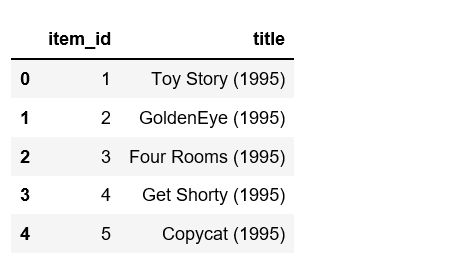
Python3
data = pd.merge(df, movie_titles, on='item_id')
data.head()
|

Python3
data.groupby('title')['rating'].mean().sort_values(ascending=False).head()
|

Python3
data.groupby('title')['rating'].count().sort_values(ascending=False).head()
|
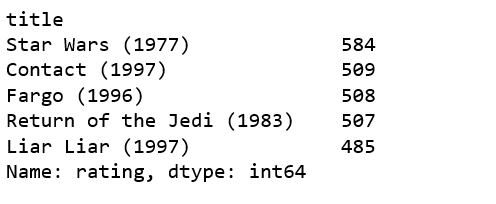
Python3
ratings = pd.DataFrame(data.groupby('title')['rating'].mean())
ratings['num of ratings'] = pd.DataFrame(data.groupby('title')['rating'].count())
ratings.head()
|
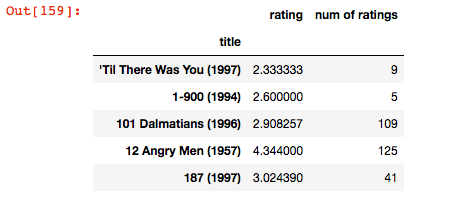
Visualization imports:
Python3
import matplotlib.pyplot as plt
import seaborn as sns
sns.set_style('white')
%matplotlib inline
|
Python3
plt.figure(figsize =(10, 4))
ratings['num of ratings'].hist(bins = 70)
|
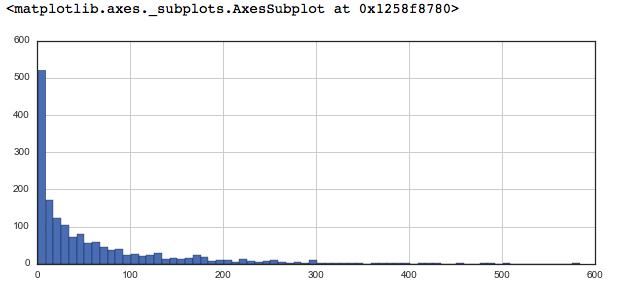
Python3
plt.figure(figsize =(10, 4))
ratings['rating'].hist(bins = 70)
|
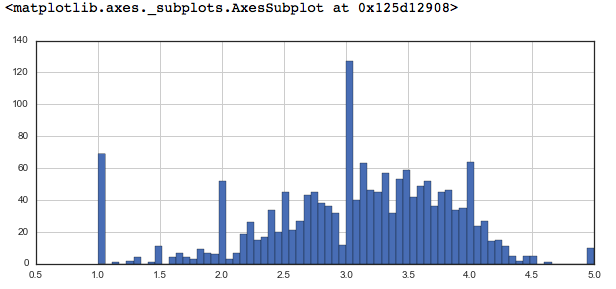
Python3
moviemat = data.pivot_table(index ='user_id',
columns ='title', values ='rating')
moviemat.head()
ratings.sort_values('num of ratings', ascending = False).head(10)
|
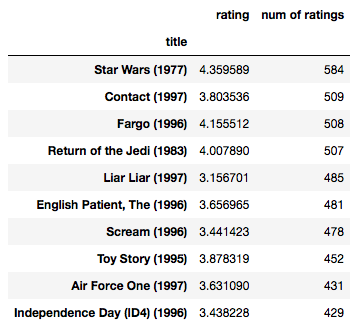
Python3
starwars_user_ratings = moviemat['Star Wars (1977)']
liarliar_user_ratings = moviemat['Liar Liar (1997)']
starwars_user_ratings.head()
|
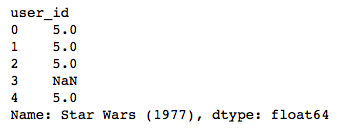
Python3
similar_to_starwars = moviemat.corrwith(starwars_user_ratings)
similar_to_liarliar = moviemat.corrwith(liarliar_user_ratings)
corr_starwars = pd.DataFrame(similar_to_starwars, columns =['Correlation'])
corr_starwars.dropna(inplace = True)
corr_starwars.head()
|
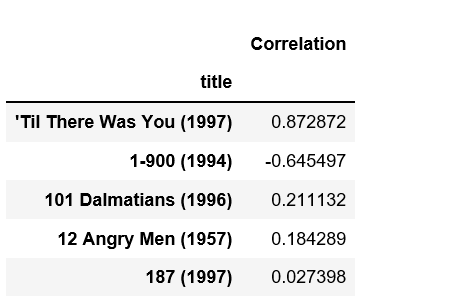
Python3
corr_starwars.sort_values('Correlation', ascending = False).head(10)
corr_starwars = corr_starwars.join(ratings['num of ratings'])
corr_starwars.head()
corr_starwars[corr_starwars['num of ratings']>100].sort_values('Correlation', ascending = False).head()
|
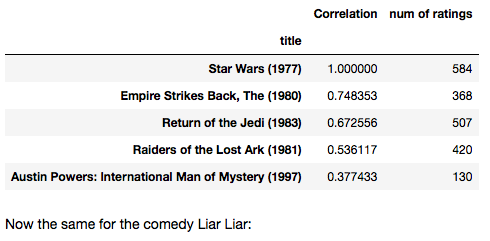
Python3
corr_liarliar = pd.DataFrame(similar_to_liarliar, columns =['Correlation'])
corr_liarliar.dropna(inplace = True)
corr_liarliar = corr_liarliar.join(ratings['num of ratings'])
corr_liarliar[corr_liarliar['num of ratings']>100].sort_values('Correlation', ascending = False).head()
|
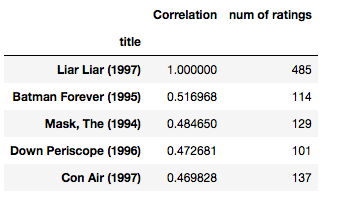
Like Article
Suggest improvement
Share your thoughts in the comments
Please Login to comment...